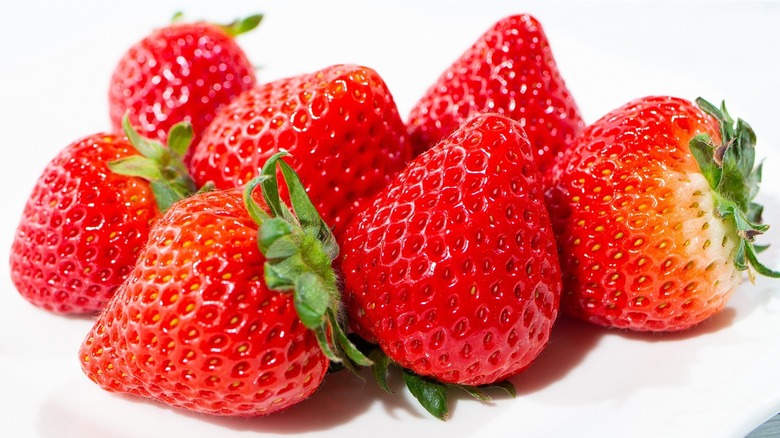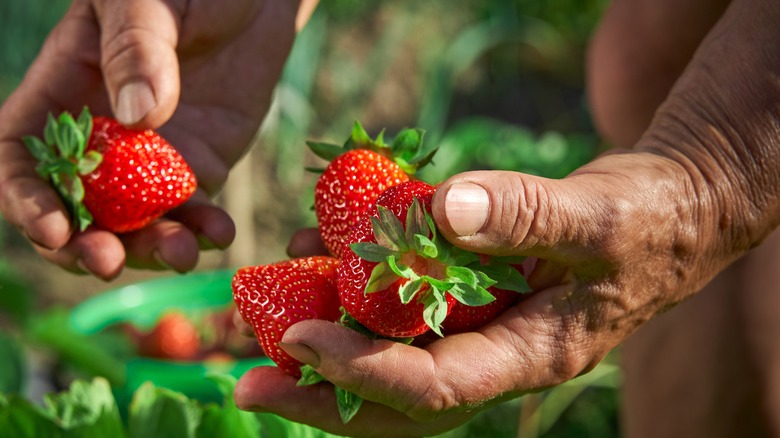Why These Japanese Strawberries Cost Almost $500 A Pop
Caviar, lobster, rare cuts of beef — these are all foods that spark no surprise when accompanied by a hefty price tag. Fruit, on the other hand, might be one of the last things you'd expect to be expensive. For nearly 50 years, Japan's Okuda Farm, spearheaded by Mikio Okuda, has been growing a unique creation called the Bijin-Hime Strawberry. The catch? These strawberries, which translate to beautiful princess in English, sell for $500 apiece, and if you want to grab a bunch, you should expect to shell out more than $4,000.
Understandably, you might wonder, "What could possibly be so special about a strawberry that it costs half a thousand dollars?" The answer to this question is multifaceted. To begin, the strawberries can grow to be as big as a baseball, and they're sweeter and juicier than the average large strawberry, or allegedly any other strawberry in the world. They're also said to have a pleasing juicy texture and an exquisite aroma that combines the essence of strawberry-ness with a hint of roses. And, perhaps most importantly, they're rare, with only 500 grown each year. Like many fruits produced in the winter, they're grown in greenhouses with perfectly controlled temperature, soil, and light. Furthermore, the strawberries are either pollinated by Okuda himself or by honeybees in said greenhouse. Still, it may be hard for the average individual to imagine spending $500 on a single piece of fruit.
Fruit is a traditional luxury gift in Japan
If you asked Chef Paul Hollywood, he would say the expensive price tag is well worth it. In his YouTube series, "Paul Hollywood Eats Japan," he explained how he felt about the Bijin-Hime Strawberry. "It makes you really happy. It's like an apple meets a strawberry meets a grape meets a whole bunch of red roses that you smell."
It's possible Japanese attitudes towards gift-giving determine the importance of these strawberries — something skeptical Americans might not understand. They're not for everyday consumption, they are most likely to be gifts for people who appreciate both their price and their value. In Japan, there's a long tradition of giving gifts of perfectly shaped fruit, which accounts for the fact that the Bijin-Hime Strawberry is not the only surprisingly expensive fruit you'll find in Japan. Certain varieties of grapes, melons, and mangoes, are equally — if not more — expensive. In every instance, the fruit is grown by the equivalent of a master craftsman, making it more of a work of art than a piece of produce. Each fruit is grown to specific standards, often in a certain region, and always in small, carefully-tended quantities. And the fact that these fruits are only perfectly ripe for a short moment of time only adds to their value. They are seen as the embodiment of the transient essence of summer.
Are you persuaded to try the strawberries yourself? If not, you can opt for another special strawberry that costs $5 each.

